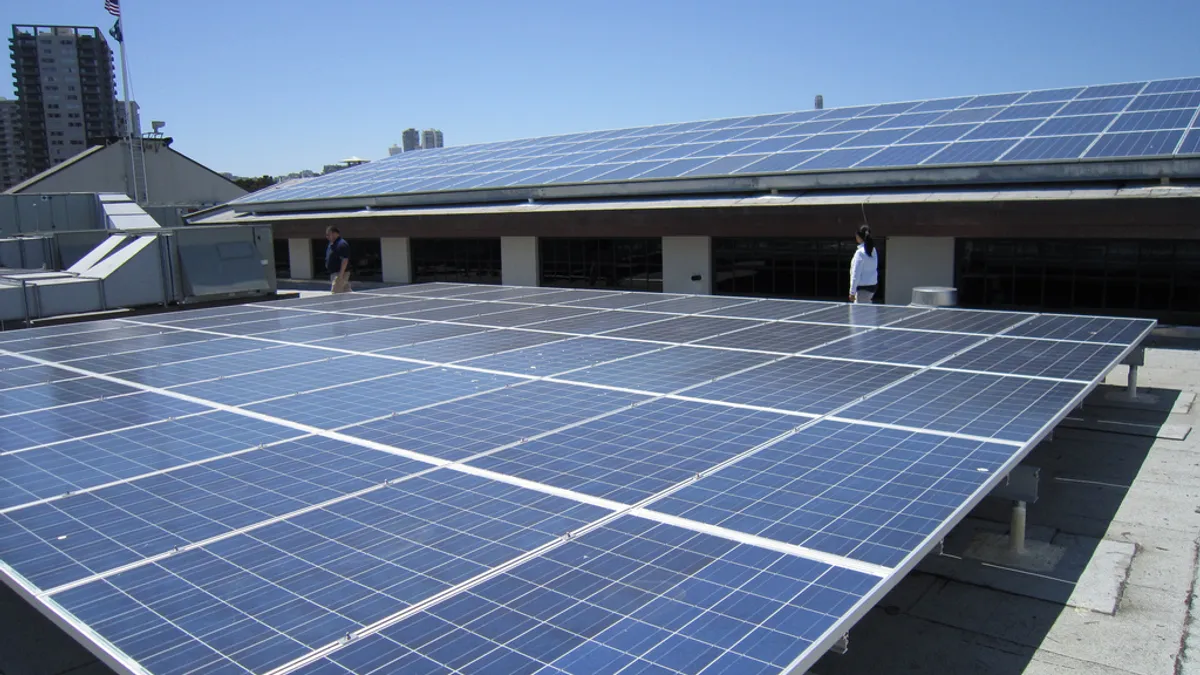Dive Brief:
- Maize High School in Sedgwick County, Kansas, recently went live with one of the state’s largest privately owned solar power grids — a 720-solar-panel, 240-kilowatt system — after raising $160,000 of the roughly $400,000 cost, with the rest was financed through a partnership with a local ethanol plant. After the system is paid for, the school expects to save more than $30,000 a year in energy spending, The Wichita Eagle reports.
- The plan is also expected to reduce carbon emissions by about 240 tons and has drawn a great deal of support from students especially, who view helping with this project as a way to do something positive for the environment and stave off the effects of climate change.
- The idea was set in motion by Stan Bergkamp, the school’s physics and chemistry teacher, who sees the project as a way to educate students about sustainable energy resources while doing something practical to help both the school and the environment. The school plans to hold a “Solar Fest” later this month to not only celebrate the project, but to allow community members to walk around the panels and become better educated about the benefits of solar energy.
Dive Insight:
School districts are one of the biggest consumers of energy, especially as they rely more heavily on tech devices, so finding ways to obtain power more effectively and at a lower cost allows schools to spend that money on more items more closely connected to education itself.
A growing number of schools are turning to solar power to meet their energy needs, and some of these solar conversions are being funded through donations, community partnerships or through available grants. Though some school districts have a tough time finding the money to make the switch, more are seeing success through the “third-party ownership model,” such as the one used by Maize High School. Under this model, a third-party partner —typically an energy firm — owns and operates the system at least until it is paid for. The company then leases the operations or the power derived from the system to the school while often receiving tax breaks in the meantime.
Many of the schools that convert to solar power are receiving or expecting to receive significant savings through the move. In Virginia, Middlesex County Schools expects to save $50,000 during the first year after solar installation, while Arlington Public Schools anticipates $4 million in savings over a 25-year period. In California, Poway Unified School District installed solar panels on 14 campuses after initially planning for 16 about two years ago, based on hopes of saving about $250,000 annually in energy costs.
According to research recently published by Stanford’s School of Earth, Energy & Environmental Sciences and appearing in Environmental Research Letters, many schools can “meet up to 75% of their electricity needs and reduce the education sector’s carbon footprint by as much as 28%” if they take advantage of all viable space for solar panels. Because of the way most schools are constructed and the size of their campus footprint, many have room for solar panels either on their rooftops or in fields surrounding the school.
However, solar power offers other benefits to schools as well. It can improve air quality, especially in states with higher levels of pollutants. And, if schools enlist the aid and support of teachers and students, the program can be combined with other energy conservation efforts to not only save money, but also to help teach valuable skills for the future. As a renewable energy source, solar power often earns the respect of students and teachers who see value in protecting the environment, as well. As schools are perceived as supporting green practices, this additionally improves their brand image and can help increase enrollment in a competitive school choice environment.












